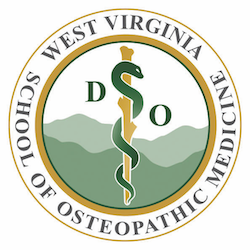By ERIC EYRE
Charleston Gazette-Mail
The number of fatal overdoses related to the nerve-pain drug gabapentin — sold by Pfizer under the brand name Neurontin — jumped from three in 2010 to 109 in 2015.
The increase has prompted a West Virginia Board of Pharmacy committee to recommend making gabapentin a controlled substance in the state. That would allow the pharmacy board to track prescriptions for gabapentin.
“It’s showing up in cocktails of drugs that are showing up in overdose deaths,” said Mike Goff, a pharmacy board administrator who oversees the state’s drug-monitoring database.
Addicts mix the drug with opioids or muscle-relaxants and anti-anxiety medications. The combination creates a euphoric high and can cause an unintentional overdose.
“Sometimes, they have prescriptions for all of them,” Goff said.
Last year’s gabapentin-related overdose deaths are expected to eclipse the 2015 total. The fatalities are still being counted. Gabapentin overdoses have increased each year since 2010.
If state lawmakers pass a bill that makes gabapentin a controlled substance, pharmacies would have to report prescriptions for the drug, and the state could monitor the number of pills prescribed each year.
“Right now, we don’t know the volume of the drug,” Goff said.
Ohio started requiring pharmacies to report sales of gabapentin on Dec. 1.
The U.S. Food and Drug Administration has approved gabapentin to treat seizures and pain caused by shingles. Some veterinarians also use it to treat epilepsy and seizures in dogs and cats.
But a recent study — first reported by Pain News Network — found one out of five people taking the drug are using it illegally. More than half took it with an opioid and about a quarter with an opioid and a muscle-relaxant or anxiety medication such as Xanax, according to researchers at ARIA Diagnostics.
A separate report by IMS Health found prescriptions for gabapentin increased 42 percent over the past five years nationwide. The U.S. Centers for Disease Control and Prevention has promoted the drug as a safer alternative to prescription opioids.
The West Virginia pharmacy board spotlighted the increase in gabapentin-related overdose deaths in the agency’s annual report released last week.
Other trends cited in the report:
The number of controlled substances dispensed in West Virginia decreased by 12.7 million last year — and by 30 million over five years. The number of hydrocodone pills dispensed statewide dropped by nearly 4 million last year, while oxycodone doses decreased by 4.5 million.
The opioid painkiller tramadol has increased from less than 1 million pills in 2011 to 35.7 million last year. Tramadol has fewer federal restrictions than hydrocodone and oxycodone.
“It’s way less potential for abuse, way less diversion,” Goff said.
West Virginians seeing multiple doctors and frequenting multiple pharmacies over a short period of time — a practice called “doctor shopping” — decreased 75 percent during the past two years.
The pharmacy board sends letters to pharmacists and physicians about suspected doctor-shoppers.
“It’s not an accusatory letter,” Goff said. “It’s an informational letter.”
The number of health professionals who use the state’s controlled substance database has doubled during the past two years. Doctors tap the database to check patients’ past prescriptions.
In West Virginia, 731 people — a record number — fatally overdosed on drugs in 2015. The state Medical Examiner’s Office has counted 717 drug overdose deaths so far in 2016, but the number is expected to increase — and likely surpass the 2015 total — after the office finishes tallying last year’s overdose deaths. The official count should be completed by March.
Fentanyl and heroin are the leading causes of overdose deaths. Hydrocodone- and oxycodone-related overdoses were highest between 2007 and 2014.
See more from the Charleston Gazette-Mail




